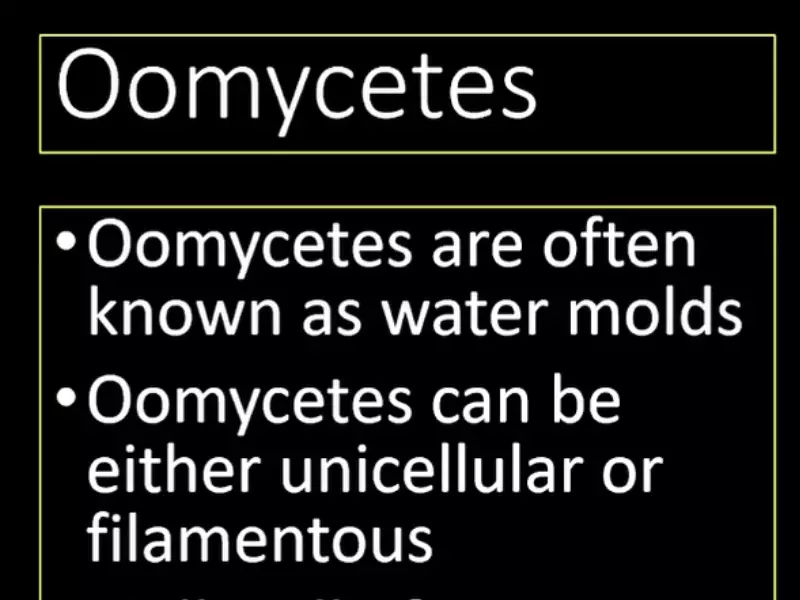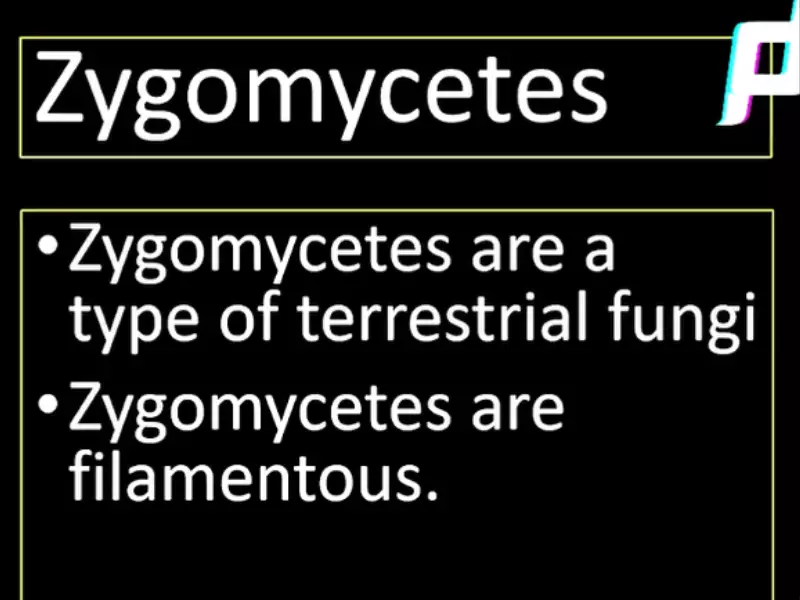Fungi and fungal-like organisms play pivotal roles in our ecosystem, balancing life cycles and contributing to various biological processes. Among these, Oomycetes and Zygomycetes stand out due to their unique characteristics and significant impacts on both natural and agricultural environments. Their differences and similarities not only intrigue scientists but also have practical implications for agriculture, medicine, and biotechnology.
Oomycetes and Zygomycetes are distinct groups with fundamental differences in their cellular structure, reproductive mechanisms, and ecological roles. Oomycetes, often mistaken for fungi, actually belong to a separate group of water molds, characterized by their filamentous growth and oospore formation. Zygomycetes, true fungi, are known for their zygospore formation during sexual reproduction. These differences underpin their diverse roles in the environment, from decomposers to pathogens.
The exploration into Oomycetes and Zygomycetes reveals a fascinating world of organisms that operate beyond the sight of the naked eye. They play critical roles in nutrient cycling, plant disease outbreaks, and even in the production of food and medicines. Their study not only enriches our understanding of microbial diversity but also enhances our ability to harness these organisms for the benefit of humanity.

Fungal Kingdom Overview
Classification and Diversity
The Fungal Kingdom encompasses an incredible diversity of life forms, ranging from microscopic yeasts to vast networks of mycelium found in mushrooms. Classified based on their reproductive methods, cell structure, and genetic makeup, fungi are divided into several phyla, including Ascomycota, Basidiomycota, Zygomycota, Chytridiomycota, and Glomeromycota. Each phylum represents a unique evolutionary path, with distinct features and ecological roles. This classification helps scientists understand the relationships between different fungal species and their impact on the environment.
Role in Ecosystem
Fungi play critical roles in ecosystems worldwide. They act as decomposers, breaking down dead organic matter, which recycles nutrients back into the soil, supporting new plant growth. Some fungi form symbiotic relationships with plants, known as mycorrhizae, which enhance plant nutrient uptake. Others have more parasitic interactions, causing diseases in plants and animals. Fungi are also essential for bioremediation, using their metabolic processes to clean up contaminated environments.
Oomycetes Explained
Definition and Characteristics
Oomycetes, often mistaken for fungi due to their similar appearance, are a group of water molds that belong to a distinct lineage. They are characterized by their filamentous structures, similar to the mycelium of true fungi, but with cell walls made of cellulose instead of chitin. Oomycetes are notorious for their pathogenic species that can cause devastating diseases in plants, such as the infamous Potato Late Blight caused by Phytophthora infestans.
Habitat and Examples
Oomycetes are found in a variety of habitats, including fresh and saltwater environments, soil, and in association with plants. They thrive in moist conditions, which facilitate their reproduction and spread. Notable examples include Pythium species, which cause damping-off disease in seedlings, and Saprolegnia, which affects fish and other aquatic organisms.
Reproduction and Life Cycle
The life cycle of Oomycetes involves both sexual and asexual reproduction. Asexually, they produce zoospores that are motile and can swim in water, leading to the spread of the organism. Sexually, they form oospores, which are thick-walled and can survive adverse conditions, serving as a means of persistence in the environment. This dual strategy enables Oomycetes to rapidly colonize new areas and survive periods of stress.
Zygomycetes Unveiled
Definition and Characteristics
Zygomycetes are a diverse group of true fungi known for their zygospore formation during sexual reproduction. They have coenocytic hyphae, which means their hyphae do not contain regular cross-walls (septa), giving them a distinctive appearance. Zygomycetes include species that are decomposers, as well as some that form symbiotic relationships with plants and animals, and others that are pathogens.
Habitat and Examples
These fungi are found in soil, on decaying plant and animal matter, and in association with living organisms. Some well-known examples include Rhizopus stolonifer, the black bread mold, and Mucor mucedo, commonly found on rotting fruit. Zygomycetes play an essential role in ecosystems by breaking down complex organic materials, making nutrients available for other organisms.
Reproduction and Life Cycle
Zygomycetes reproduce through asexual and sexual means. Asexually, they produce sporangiospores within a structure called a sporangium. Sexually, two compatible hyphae fuse to form a zygospore, a resistant structure that can survive unfavorable conditions until it germinates to produce a new sporangium. This life cycle enables zygomycetes to adapt and survive in various environments.
Comparative Analysis
Cell Structure Differences
The cell structure of Oomycetes and Zygomycetes highlights their distinct evolutionary paths. Oomycetes have cell walls made of cellulose, while Zygomycetes, like other fungi, have cell walls composed of chitin. This fundamental difference is a key identifier in distinguishing between the two groups.
Reproductive Strategies
Reproduction in Oomycetes and Zygomycetes involves both asexual and sexual mechanisms, but their methods are distinct. Oomycetes produce oospores and zoospores, which are adaptations to their often aquatic or moist environments. In contrast, Zygomycetes form zygospores during sexual reproduction, which are well-suited for surviving in terrestrial environments with variable conditions.
Environmental Roles and Impacts
Both Oomycetes and Zygomycetes play significant roles in their ecosystems, but their impacts can be quite different. Oomycetes are often pathogens, affecting a wide range of plants and animals and causing economic losses in agriculture and aquaculture. Zygomycetes, however, are primarily decomposers, contributing to nutrient cycling and the breakdown of organic matter, though some species can be pathogenic or form beneficial symbioses. Understanding these roles and impacts is crucial for managing ecosystems and mitigating the effects of pathogenic species.

Economic Importance
Oomycetes in Agriculture
Oomycetes have a significant impact on agriculture, often in the form of plant pathogens that cause diseases leading to substantial crop losses. For example, Phytophthora infestans, responsible for the Potato Late Blight, has been a notorious cause of famine and economic hardship. The economic importance of managing Oomycetes lies in disease prevention and control strategies that include:
- Development of resistant crop varieties
- Use of fungicides and other chemical treatments
- Implementation of crop rotation and other cultural practices to reduce pathogen spread
These strategies not only help in reducing losses but also in maintaining the sustainability of agricultural practices.
Zygomycetes in Industry
Zygomycetes play a vital role in various industries, contributing to the production of foods, enzymes, and biochemicals. One of the most notable examples is the use of Rhizopus species in the fermentation process to produce tempeh, a traditional soy product. Zygomycetes are also involved in the production of organic acids like citric acid and industrial enzymes. Their ability to break down complex substances makes them valuable in bioremediation efforts, where they help in detoxifying contaminated environments.
Environmental Significance
Decomposition and Nutrient Cycling
Both Oomycetes and Zygomycetes are essential for nutrient cycling in ecosystems. By decomposing dead organic matter, they release nutrients back into the soil, making them available for plant uptake. This process of decomposition plays a crucial role in maintaining soil health and fertility. Zygomycetes, in particular, are efficient decomposers, breaking down complex carbohydrates like cellulose and lignin in plant material.
Pathogenic Roles and Control Methods
While many Oomycetes and Zygomycetes are beneficial, some species are pathogenic, causing diseases in plants, animals, and even humans. Managing these pathogens involves a combination of cultural, chemical, and biological control methods. For example, crop rotation and sanitation can reduce the presence of pathogenic spores in the soil, while biological control involves using other microorganisms to suppress the growth of pathogens. Chemical control, though effective, is used with caution to avoid the development of resistance and to minimize environmental impact.
Research and Innovations
Biotechnological Applications
Recent advancements in biotechnology have leveraged the unique properties of Oomycetes and Zygomycetes for innovative applications. Genetic engineering techniques enable the modification of these organisms to produce valuable compounds, such as pharmaceuticals, vitamins, and biofuels. Moreover, their enzymes are used in industrial processes, including textile and paper manufacturing, improving efficiency and reducing the use of harmful chemicals.
Recent Studies and Discoveries
Research into Oomycetes and Zygomycetes has led to fascinating discoveries, shedding light on their biology and offering new ways to exploit their capabilities. Recent studies have explored the genomic adaptations of these organisms to their environments, providing insights into their survival strategies and pathogenicity. Additionally, the discovery of novel compounds produced by these organisms has potential applications in medicine, such as new antibiotics and antifungals to combat resistant pathogens.
Challenges and Solutions
Disease Management in Agriculture
The management of diseases caused by Oomycetes and Zygomycetes in agriculture is a significant challenge. Solutions involve an integrated pest management (IPM) approach, combining:
- Monitoring and early detection of pathogens
- Use of resistant varieties of crops
- Biological control agents to naturally suppress pathogens
- Cultural practices that reduce pathogen spread
- Targeted chemical treatments when necessary
This holistic approach helps in reducing reliance on chemicals and promotes sustainable agriculture.
Sustainable Use in Industries
Leveraging the industrial applications of Zygomycetes while ensuring sustainability poses challenges. Solutions include:
- Developing low-impact fermentation technologies that use less energy and produce fewer byproducts
- Exploring waste materials as substrates for fungal growth and product formation, reducing waste and input costs
- Implementing closed-loop systems in production to recycle waste and minimize environmental impact
Frequently Asked Questions
What are Oomycetes?
Oomycetes, often referred to as water molds, are a group of filamentous organisms that closely resemble fungi but are phylogenetically distinct. They thrive in aquatic environments and moist soil, playing roles as decomposers and pathogens. Unlike true fungi, Oomycetes have a cell wall made of cellulose and reproduce using oospores, a type of spore that is formed sexually.
How do Zygomycetes reproduce?
Zygomycetes reproduce both sexually and asexually. In their sexual reproduction, two different mating types come together to form a zygospore, a thick-walled resting spore that can withstand unfavorable conditions. Asexually, they produce sporangiospores, which are released to initiate a new cycle of growth when conditions are favorable.
What is the economic impact of Oomycetes and Zygomycetes?
Oomycetes and Zygomycetes have significant economic impacts, especially in agriculture and industry. Some Oomycetes cause devastating plant diseases, leading to substantial crop losses. On the other hand, Zygomycetes are exploited in biotechnology for the production of organic acids, alcohol, and enzymes. Their roles range from being detrimental to beneficial, depending on the species and context.
Can Oomycetes and Zygomycetes affect human health?
Yes, certain Oomycetes and Zygomycetes can affect human health, albeit in different ways. Some Oomycetes are responsible for plant diseases that can indirectly impact food supply and quality. Zygomycetes include species that can cause infections in humans, particularly in immunocompromised individuals, leading to zygomycosis, a serious condition that requires prompt medical attention.
Conclusion
The exploration of Oomycetes and Zygomycetes uncovers a microcosm of life that significantly influences our natural world and human activities. Their contrasting characteristics and the roles they play in ecosystems highlight the diversity of life forms and their complex interactions. Understanding these organisms is crucial for managing ecosystems, improving agricultural practices, and exploring new scientific and biotechnological frontiers.
In conclusion, the distinction between Oomycetes and Zygomycetes offers more than just an academic interest; it provides insights into the broader themes of evolution, ecology, and the application of biological knowledge. As we continue to study these organisms, we unlock the potential to address environmental challenges, enhance food security, and develop new technologies, underscoring the importance of microbial diversity in shaping our world.
